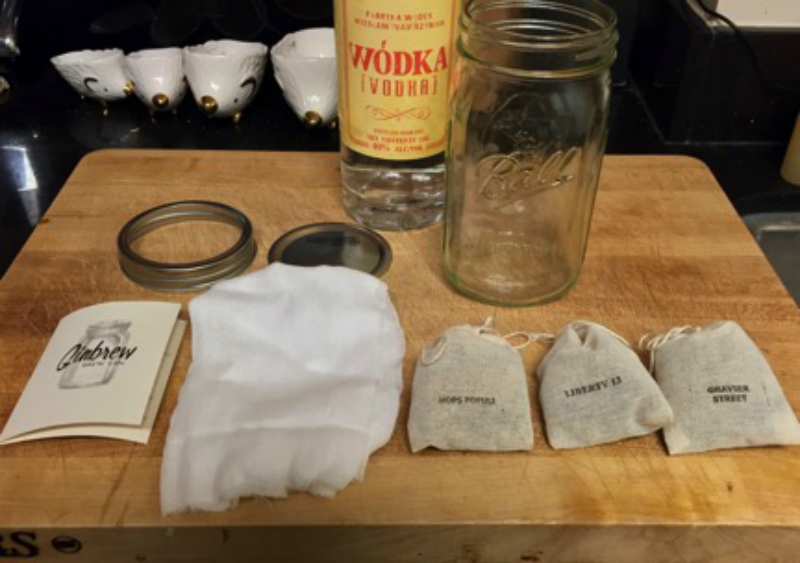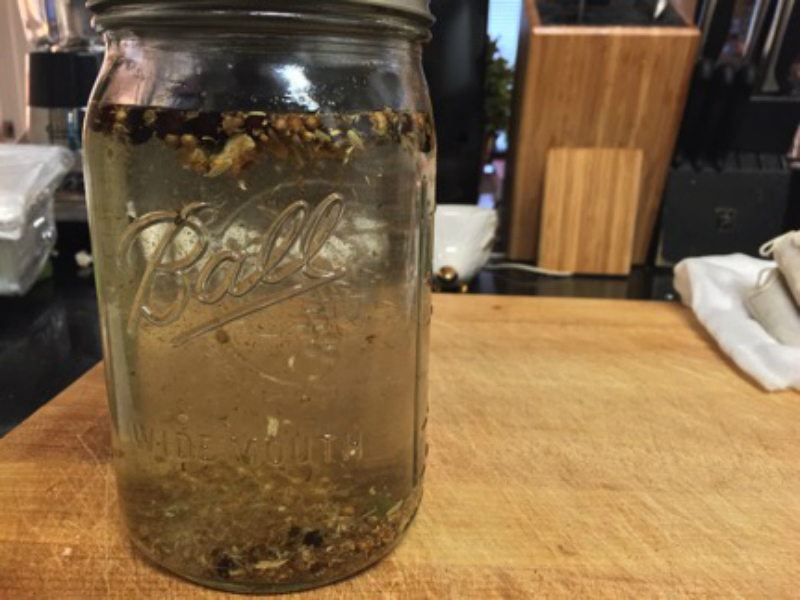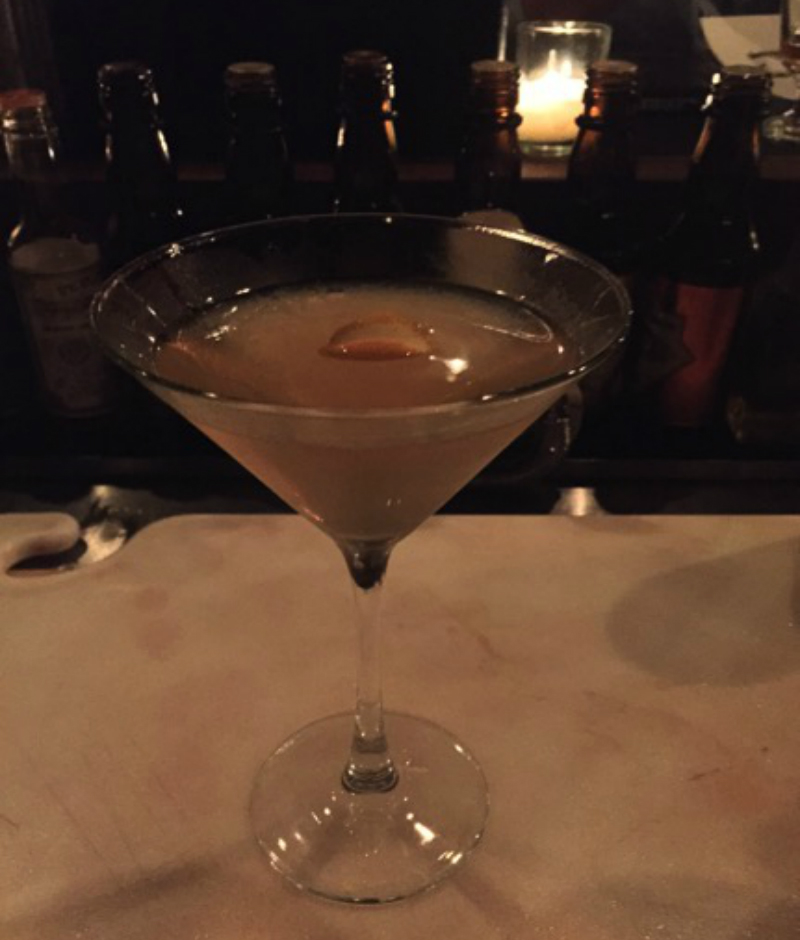Join War on the Rocks and gain access to content trusted by policymakers, military leaders, and strategic thinkers worldwide.


Let’s make one thing clear — I’m a vodka snob. Unlike the guy at the nightclub in the Affliction t-shirt, who swears there’s a difference between Belvedere and Grey Goose, my snobbery causes me to (almost) completely forego the colorless, odorless, flavorless poison. This opinion is an unpopular one, as vodka is firmly entrenched in American drinking culture, and has been since the Depression. This is also not to say I don’t drink vodka, but when I do, I prefer to do it in the Slavic style — ice cold, surrounded by caviar and pork fat, and as a shot.
Conversely, I love gin. Despite essentially being the crack cocaine of the Georgian era, gin is a much more civilized spirit today. Gin is beautiful on its own, mixes well, and has complexity that vodka simply cannot offer. It’s ironic, then, that gin is essentially the original flavored vodka, but I don’t let that affect me.
To make gin, you basically start by making vodka. Find some sort of neutral grain or otherwise fermentable foodstuff. Grapes, beets, potatoes, sugar cane, or grain all work. Mix your mash with water and let it ferment for a little while (incidentally, this is more or less how you make beer). Once it’s fermented sufficiently, pull out your column still. After distilling your mash to a high ABV spirit (96 percent or greater), give that distillate a pass through a pot or column still with a gin basket inside (a mesh basket filled with gin aromatics). Congratulations, you’ve effectively distilled your first batch of Dutch Courage!
Now for most of us, we don’t have a column still lying around in the rumpus room. Enter Ginbrew. Ginbrew’s tagline on its website is “turn vodka into something delicious,” which I thought was impossible. It was nice to be proven wrong.
When you get your Ginbrew kit, it comes with a one-liter mason jar, some cheesecloth, and three small burlap sacks filled with different types of gin aromatics. At the center of every blend are, of course, juniper berries (which apparently you shouldn’t handle if pregnant), and a number of other gin aromatics. What it doesn’t come with is a liter of vodka, which you have to buy at the store. I chose a Polish vodka appropriately called “Vodka” that was pretty reasonable at $18 a bottle.

The Ginbrew kit
Ginbrew offers two “blends” of their aromatics, a traditional and a summer blend. Seeing as it’s summer, I opted for the summer blend, which comes with three aromatic satchels. They are as follows (language borrowed from Ginbrew’s website):
Liberty 13 is our flagship blend. Its thirteen botanicals yield a harmonious balance of evergreen, herbal, citrus, and spice notes, with a subtly floral nose and a crisp peppery finish. It’s named in honor of the big, powerful Liberty engines — originally built for military airplanes — that many bootleggers installed on their boats to outrun Coast Guard patrols. Their ingenuity helped Americans exercise an important freedom at a time when it was in danger: the liberty to have a drink when you want one.
Gravier Street is a bright, citrusy blend which we think works particularly well in a gin and tonic. Lemongrass, mint, ginger root, and star anise add their fragrances to a strong juniper backbone. It takes its name from the historic avenue in New Orleans’ French Quarter where Henry Ramos’ saloon once stood and where he invented the Ramos Gin Fizz — incidentally, another cocktail in which we think this blend works superbly.
Hops Populi: Hops for the people! Hopped gin is probably one of the few new booze trends that can claim genuine novelty, there being no history of the hop flower’s use outside of beer until very recently. Hops Populi uses German Hallertau hops, which contribute aromatic floral and herbal notes as well as a subtle spicy tang. Earthy Angelica root and the slight sweetness of elderflower balance out the blend.

Liberty 13 set aside before infusion
At its core, Ginbrew is a pretty straightforward concept. Essentially, you’re infusing vodka with gin botanicals. Infusion is a fancy way of saying you’re leaving herbs and aromatics to steep in alcohol for an amount of time, which in Ginbrew’s case is one week. That said, Ginbrew could not be simpler.
On day seven, strain and bottle. That’s it.

Liberty 13 on its first night in the jar

Liberty 13 on its last night in the jar
So this is all well and good, but the important question is obviously, how does it taste? The answer? Pretty good!
I had some bartender friends of mine mix up a few classic cocktails with Ginbrew’s three different blends, and the results were solid. Ginbrew’s blends are definitely in the “new school” of gin, which is to say they are very heavy on the aromatics. Ginbrew calls to mind a DC distillery’s flagship product, Green Hat Gin. In my opinion, Ginbrew’s products are okay in cocktails where subtlety is required (e.g. Martinis, Vespers, Martinez), but really shine when playing with other ingredients (the notable exception being a gin and tonic). Below is a chart of drinks we tried with Ginbrew’s three kits:
| Liberty 13 | Gravier Street | Hops Populi | |
| Martini | C+ | C | C |
| Gin Rickey | A- | B+ | B- |
| Corpse Reviver #2 | B- | B | B- |
| Gin & Tonic | A | A- | A |
| Negroni | A+ | A | A |
| Aviation | A | A- | B+ |
| Martinez | B- | — | — |
| Ramos Gin Fizz | — | A | — |
| Vesper | — | — | C |
Overall, the Negroni was a clear winner across all three types of Ginbrew. It plays exceptionally well with Campari, and provides a phenomenal aromatic backbone to the cocktail. Additionally, it’s an excellent gin for the eternal gin and tonic. As promised by Ginbrew’s website, Gravier Street does make a damn good Ramos Gin Fizz (but you’ve got to put in the full 12 minutes to shake the thing). My bartender friends and I also crafted an original cocktail for Ginbrew, which was as follows:
1½ Oz. Ginbrew Liberty 13 Blend
½ Oz. Laphroaig Ten Year Old Scotch Whisky
½ Oz. Cocchi Americano
¼ Oz. Rothman and Winter Peach Liqueur
¼ Oz. Cointreau
1 Dash Lemon Juice
1 Dash Orange Bitters
Build in mixing glass, ice and stir, serve up with a lemon peel.

Ginbrew original cocktail
If I had one complaint about Ginbrew, it’s got to be cost. Ginbrew’s kits sell for $29.99, and you get three “bottles” of gin out of that. While you can go out and buy two handles of Banker’s Club vodka (with its classy plastic bottle), you’re probably going to want to spend a little bit of money so it doesn’t feel like drinking liquid knives. For me, Ginbrew set me back $30 per batch (prorating the cost of the kit into the overall cost). That’s not that bad, but a fifth of Beefeater is $28 around the corner from me. The novelty of making one’s own gin, though, more than makes up for the nominal price difference.
Overall, I’m happy to support a local business that’s fielding a pretty unique product. On the whole, Ginbrew’s uniqueness makes for a great conversation piece, and for even better drinking.
Alex Hecht is editor of Molotov Cocktail. He works as a Security Analyst in Washington, DC. Before working for the man, he managed the Gibson, a cocktail bar in DC’s U Street corridor. Alex’s life is admittedly mellower now, but his liver probably thanks him for that.